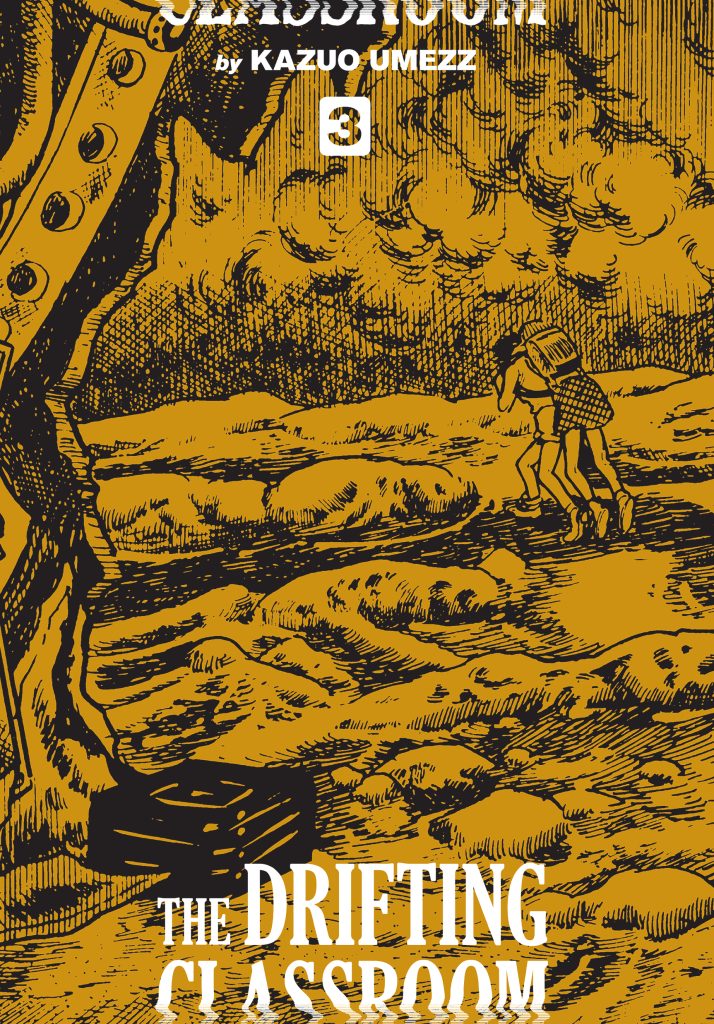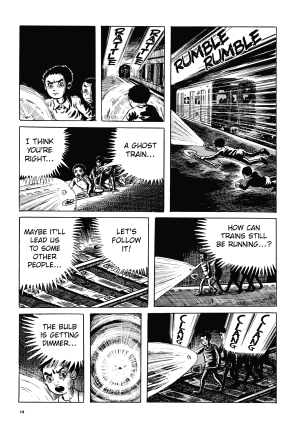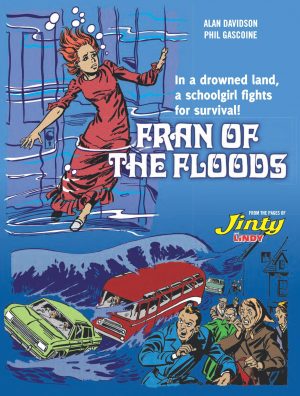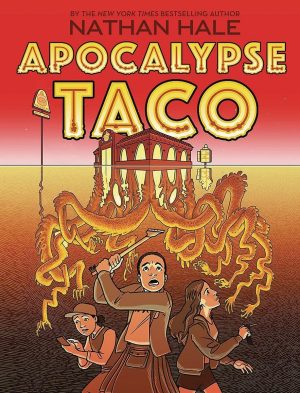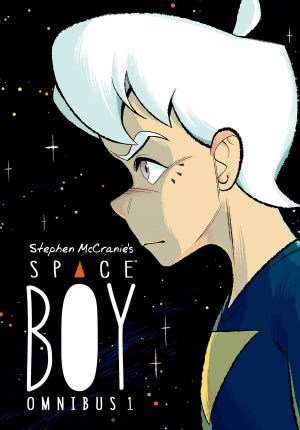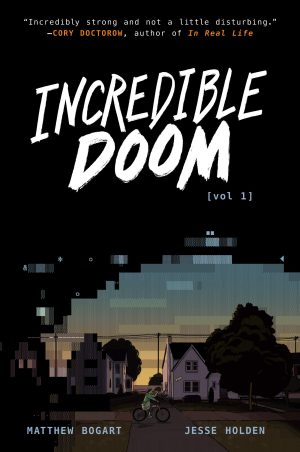Review by Diego Guerra
Spoilers in review
Little Sho and his schoolfriends find themselves in the desert-like Tokyo of the future where civilization no longer exists, and the planet resembles a gigantic wasteland. They have faced all kinds of dangers, confronted real and imaginary monsters, and have become great friends, but some have become terrible rivals. This group of brave children has endured events no child has ever faced before, and in the third and final volume of The Drifting Classroom they face the most serious danger of all: dying of starvation.
Among the remnants of the old city, mummified human remains, ghost trains, and amusement parks populated by sinister robots, a new post-human species of monsters has emerged, capable of communicating with the children. They explain they are the successors of humanity, and perhaps the end of civilization is not so far from the 20th century from which our heroes come. Food reserves have been depleted, and Sho and his friends must seek new spaces and, guided by an ancient artificial intelligence, perhaps find a way to return home and to their time.
In the midst of robots, monsters, and ghosts, these little heroes will have to perform truly superhuman feats to survive.
It should be noted that Kazuo Umezz faces an immense challenge in concluding an improbable, excessive, and desperate story, but he manages to end it well. Throughout its three extensive volumes, The Drifting Classroom has been unevenly treated. Sometimes extending too far into irrelevant subplots,and sometimes going too far in showing the suffering of children in situations as desperate as an appendectomy performed by an 8-year-old child. Or confrontations between desperate little children that lead to deaths, and at the most desperate moment, to cannibalism. On the other hand, here the elements typical of science fiction are more actively present, seeking to give a moderately convincing explanation to the strange phenomenon that has led this group of children to the future.
It is a very strange, unusual, and improbable adventure, to which Umezz supplies an adequate finish, avoiding the happy endings expected from a children’s adventure, but somehow managing to be hopeful.
Finally, the Japanese comic of the 1970s is characterized by that epic tone, of saga. And by that deep sense of honour and sacrifice, of strength in the face of adversity, which is the main characteristic of little Sho, a quality leading him to prevail until the end.
The entire story is also available as a boxed set of all three hardcovers.
